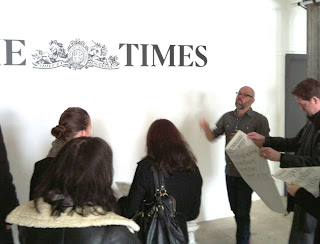 Chris and Suzanne Sharp founded The Rug Company in 1997 creating really iconic and desirable rugs. Uniquely, they achieve this by combining the ancient craft of rug making with the creative brilliance of contemporary designers including Alexander McQueen, Rob Ryan, Tom Dixon to name but a few. These beautiful rugs are available through a worldwide network of shops and outlets from London to New York, Los Angeles, Moscow, Hong Kong and more!
Chris and Suzanne Sharp founded The Rug Company in 1997 creating really iconic and desirable rugs. Uniquely, they achieve this by combining the ancient craft of rug making with the creative brilliance of contemporary designers including Alexander McQueen, Rob Ryan, Tom Dixon to name but a few. These beautiful rugs are available through a worldwide network of shops and outlets from London to New York, Los Angeles, Moscow, Hong Kong and more!This is the catalogue for their new Studio Collection which includes Dhurries, Udaipur Dhurries, Tibetan Hand Knotted, Bamboo Ikats and cushions
Image reproduction was paramount but it was also important that the publication also projected the tactility of the actual rugs, so a silk or gloss coated paper wasn't an option. The material chosen was our Omnia. The cover would print, de-boss and foil beautifully and the Omnia would reproduce the photography with the delicate weave, bold patterns and strong blue solids superbly ...and it looks brilliant! Size of the book is 167x230mm, portrait format, perfect bound. 4pp cover is on Omnia 280gsm and the 64pp text is printed in CMYK throughout.
Detail showing cover which is de-bossed and hot foil blocked in gold foil. This is one of those jobs that images of the publication look good but they can't really project the quality and production values that you feel if you actually had the piece in your hand. The detail in the foiling, the crispness of the de-bossing and the colour reproduction is simply superb. It's worth noting that Generation Press, who produced the job, are one of the few printers to have foiling and finishing in-house so they can keep a close control on quality and they certainly have with this job.
Suzanne Sharp at The Rug Company, orchestrated the desert photography shoot and design was handled in house.
The excellent print, foiling and finishing is by Generation Press.
www.generationpress.co.uk
Posted by Justin Hobson 11.12.2011








































